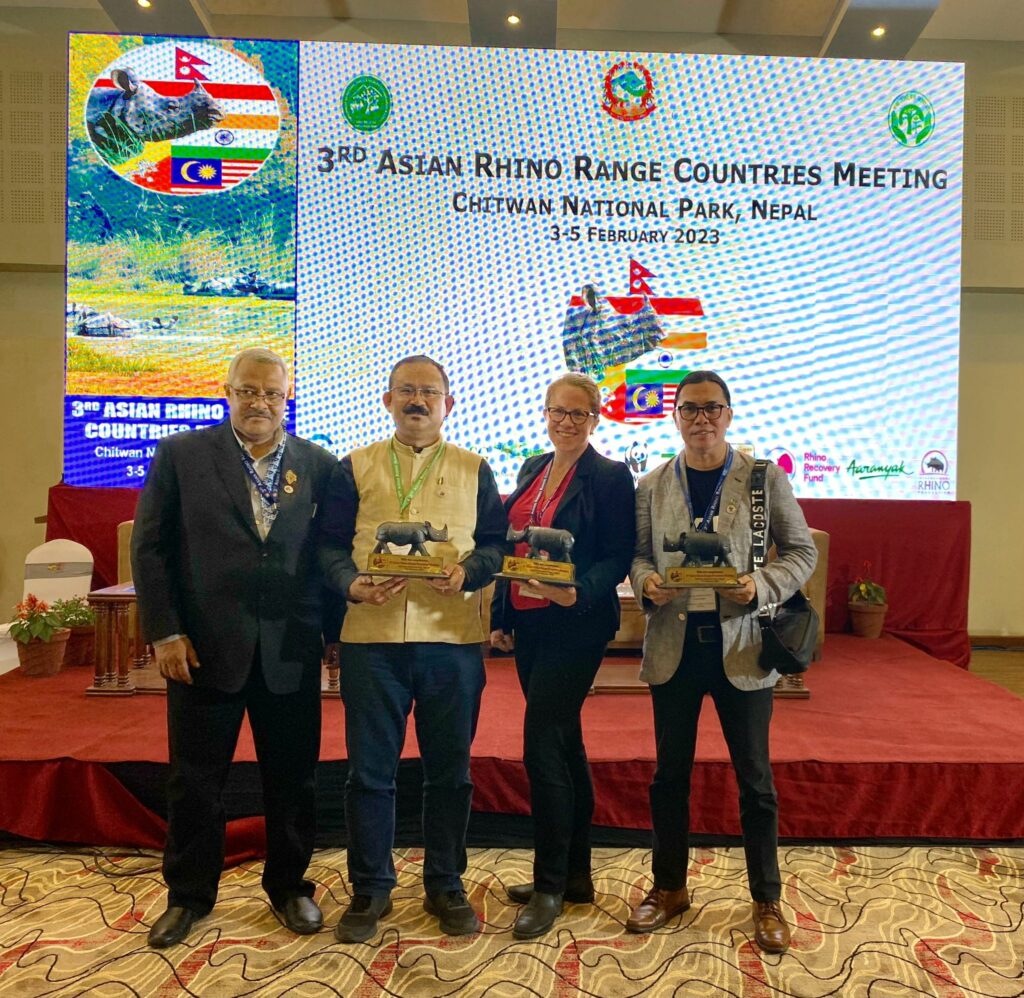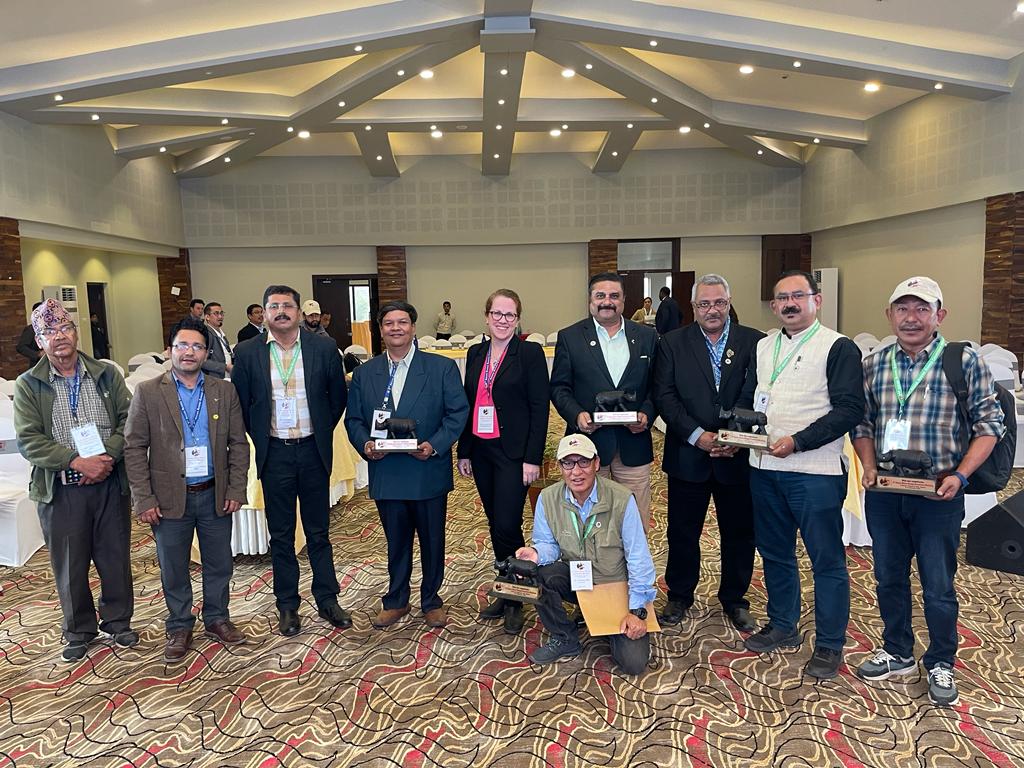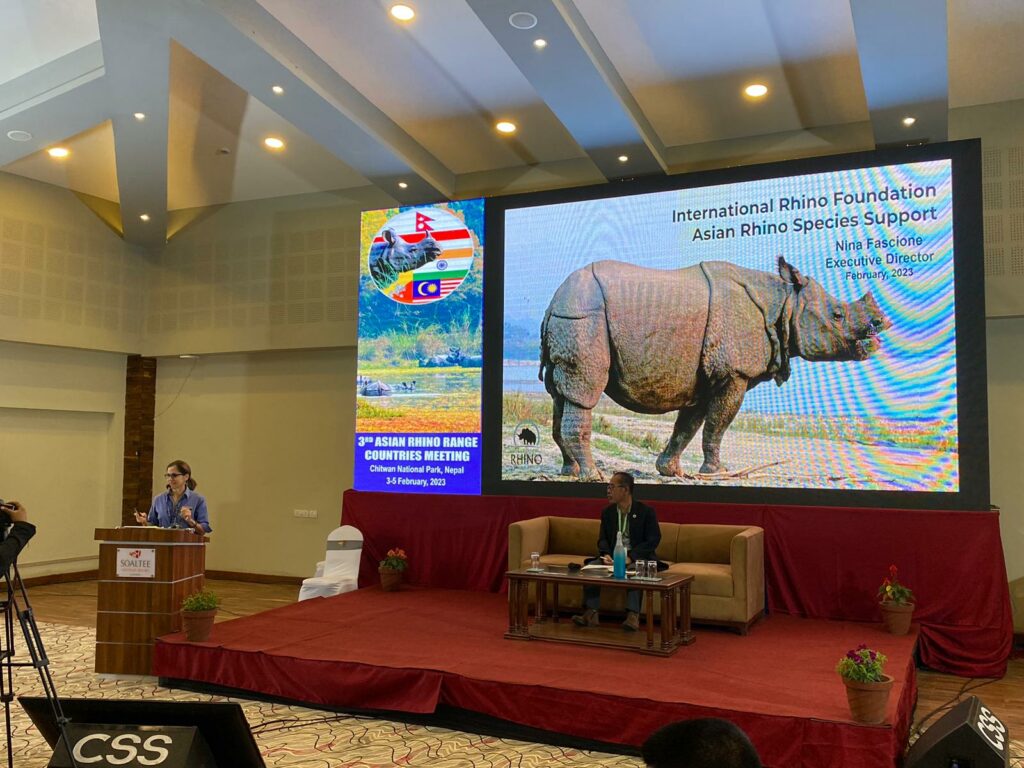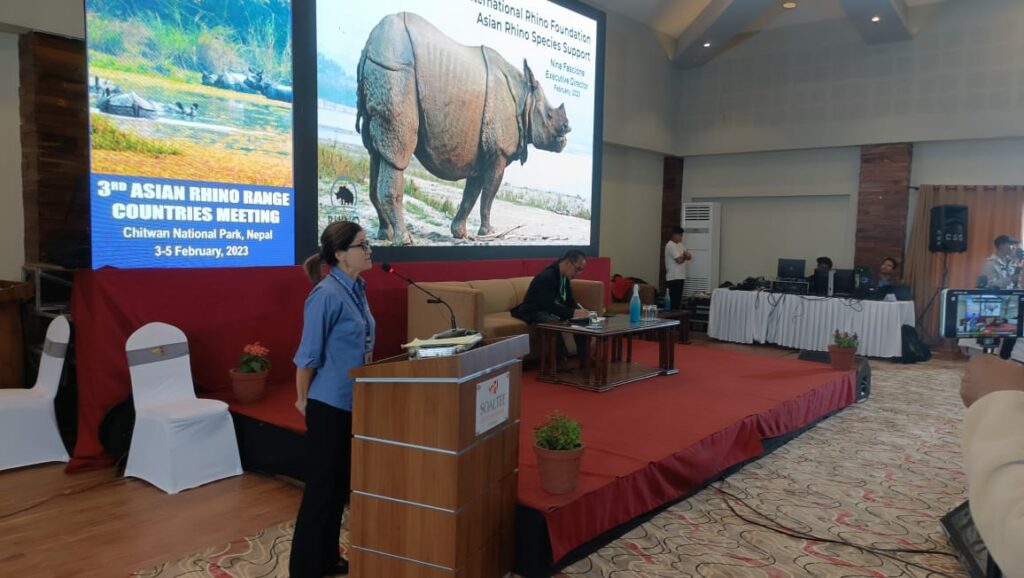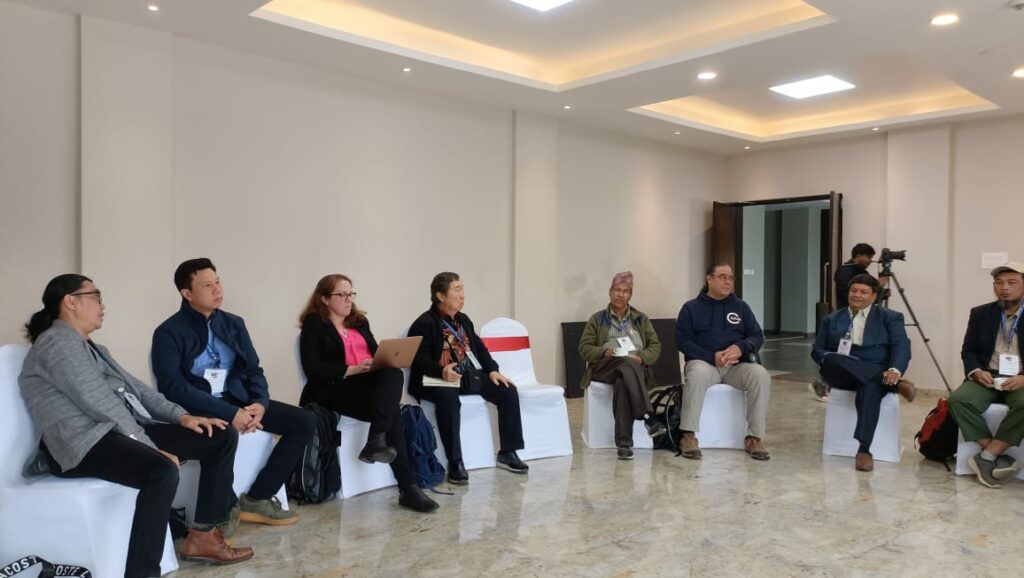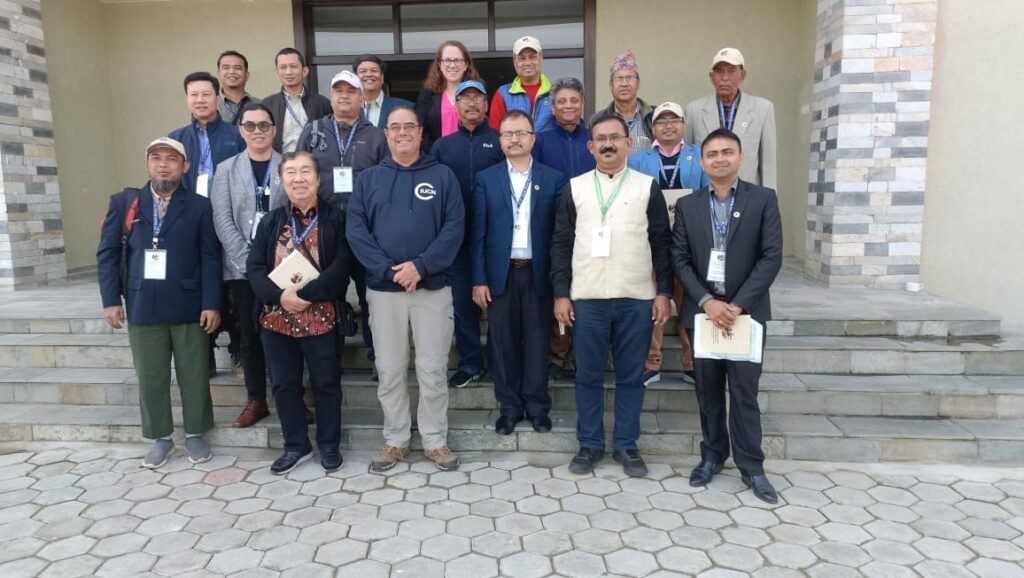Third Asian Rhino Range Countries Meeting Concludes with Declaration Outlining Priorities for Rhino Conservation
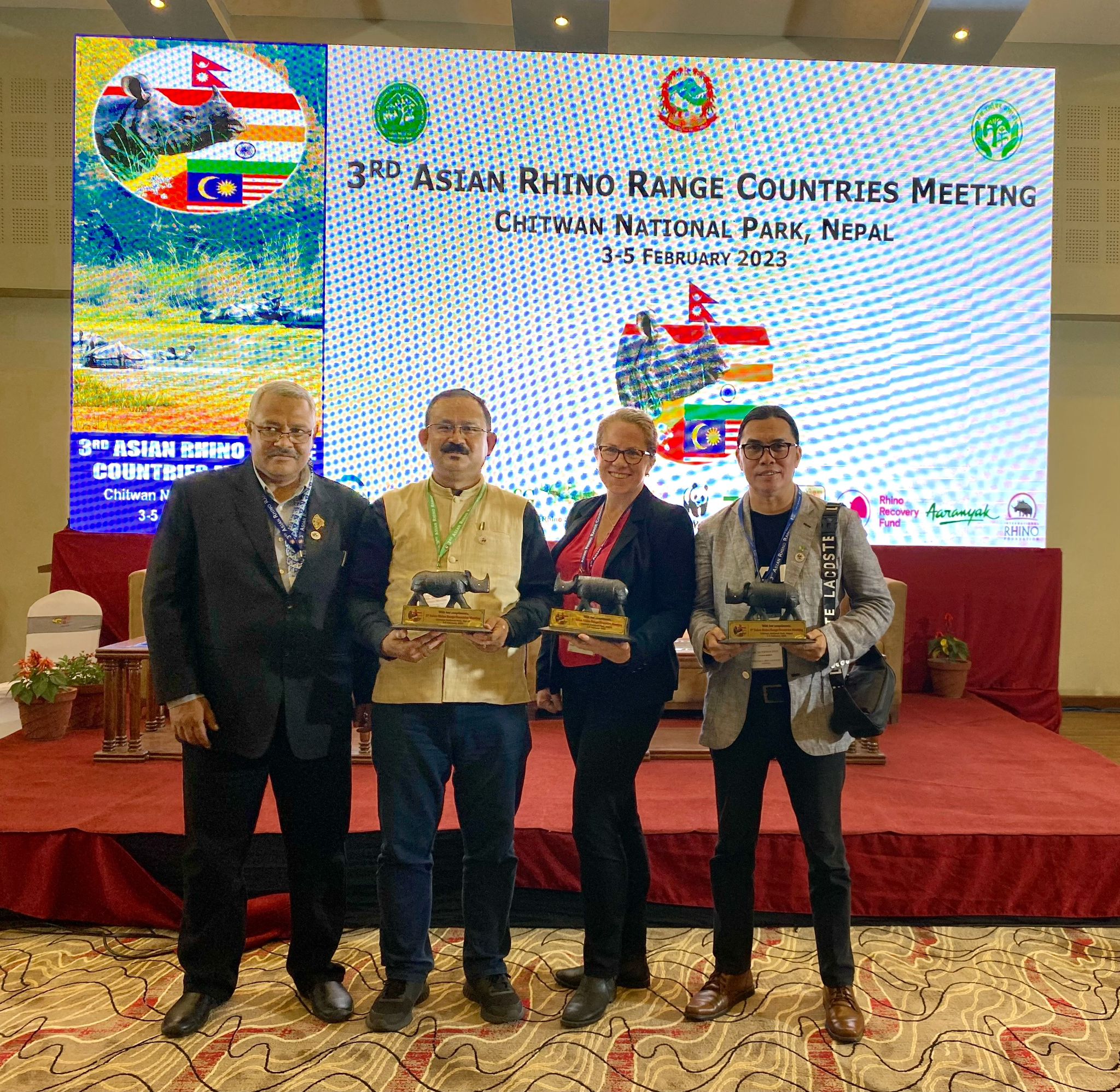
The third Asian Rhino Countries Meeting concluded with the adoption of the Chitwan Declaration for Asian Rhino Conservation, 2023. The meeting was held in Chitwan National Park, Nepal from February 3-5. The meeting was attended by delegates from Bhutan, India, Indonesia, Malaysia and Nepal as well as rhino experts from around the world, including the International Rhino Foundation.
The attendees discussed a wide range of issues impacting the three rhino species native to Asia – greater one-horned, Javan and Sumatran. The meeting is a catalyst for sharing best practices and promoting collaboration on key issues impacting rhinos such as poaching, illegal wildlife trade, habitat loss and fragmentation of populations.
Over the course of the three days of deliberations, the delegates set priorities for rhino conservation for the next four years, launching the Chitwan Declaration for Asian Rhinos Conservation, 2023. The document outlines the countries agreement to coordinate and collaborate in six areas: protection; population management; habitat management; research monitoring and information sharing. You can review the declaration below.
Chitwan Declaration for Asian Rhinos Conservation, 2023
Based on the three days deliberations, during the 3rd Asian Rhino Range Countries Meeting held in Chitwan National Park, Nepal, the delegates of Bhutan, India, Indonesia, Malaysia, and Nepal recognized the diverse challenges being faced by the Asian Rhinos and agreed on:
Protection
- Strengthen protection regime, intelligence gathering, and real time sharing of intelligence information on Rhino crime and its illegal horn trade.
- Use of advanced technology including use of forensic science to aid on-going protection and surveillance to prevent illegal hunting of Rhinos.
- Enhance boots on the ground for regular field vigil to detect and deter wildlife offenses in Rhino bearing areas, with special emphasis on strategic locations.
- Upkeep high morale of frontline staff through improved field facilities and incentive packages.
- Enhancement of skills and capacity building of frontline staff including wildlife crime investigations.
- Provide alternative livelihoods to increase local economic growth and community development programs around Rhino bearing Protected Areas.
- Mobilization and empowerment of local communities for community-based conservation activities.
- Strengthening and harmonization of legal framework and regulations to combat wildlife crime.
Population Management
- Establish National Conservation Breeding Program for Sumatran Rhino in Indonesia, to direct the management of all Sumatran Rhinos under human care as a single population and manage for optimal growth. Use multiple approaches to accurately detect and save isolated Sumatran Rhino populations in the wild, then consolidate them into a sanctuary for breeding purposes as a part of the national breeding program.
- Support the movement of Sumatran Rhino amongst the breeding centers under the National Conservation Breeding Program to optimize breeding opportunities, genetic diversity and population growth.
- Establish and operate the Javan Rhino Study and Conservation Area (JRSCA) Management System as a management center for the Javan Rhinoceros population.
- Establish a second habitat and population of the Javan Rhino outside of the Ujung Kulon National Park.
- Encourage the exchange of Rhinos between the populations of the same species in order to improve the genetic health.
- Explore possibilities of expanding Rhino ranges within country or between Rhino range countries for optimal population management.
- Sharing of technologies and scientific knowledge to restore the species and ecosystems, including Assisted Reproduction Technology (ART).
Habitat Management
- Improve habitat management techniques in Rhino bearing areas to maximize habitat suitability and expansion of its range.
- Develop and implement Rhino habitat management guidelines to ensure continuous availability of food, water and space for Rhinos.
- Minimizing the threats on the Rhino habitats including invasive alien species.
- Adopting wildlife-friendly measures in developmental projects to minimize adverse effects on Rhino habitat and prevent fragmentation and degradation of Rhino range.
Research, monitoring and information sharing
- Conduct/promote long term research on various aspects related to Rhino conservation including population and habitat management, captive breeding potential, human-Rhino interface, genetic health and control of invasive species.
- Establish routine-based Rhino population monitoring system in Rhino bearing areas and conduct Rhino population survey every four years.
- Promote studies on potential impacts of climate change on species and habitats.
- Undertake studies on Rhino health issues & potential diseases and take necessary steps for management intervention as per One Health principles.
- Conduct water health assessment and availability in Rhino habitats.
- Identify potential areas and conduct feasibility study for reintroduction.
- Sharing studies, research outcomes and best practices among range countries.
Coordination and cooperation
- Strengthen transboundary collaboration among Asian Rhino range countries.
- Strengthen cooperation and engagement between Bhutan, Nepal and India sharing contiguous habitats and connecting corridors.
- Regularly carry out cross-learning visits among the managers and frontline staff of the Rhino range countries.
- Increase the engagement of the local communities as stewards to secure the future of Rhinos in range countries and promote coexistence.
The Asian Rhino range countries agreed to launch special Rhino conservation program focusing on community-based initiatives in the vicinity of their Rhino bearing areas.
The member countries also agreed that the critically endangered Sumatran Rhino needs time bound recovery measures in the range countries and appeal to global communities to complement the effort, technically and financially, to secure the species.
The member countries, additionally, agreed to review the status of the three species of Asian Rhinos every 4 years to reassess the need for joint actions to secure the future.
The five Asian Rhino Range Countries; Bhutan, India, Indonesia, Malaysia and Nepal; hereby commit to managing the populations of the Greater One‐Horned, Javan and Sumatran Rhinos with the intention of achieving at least 3% annual growth rate in their populations for these Rhino bearing countries, through the implementation of the strategic actions outlined in this Declaration.

